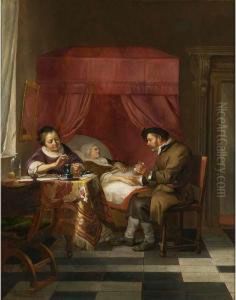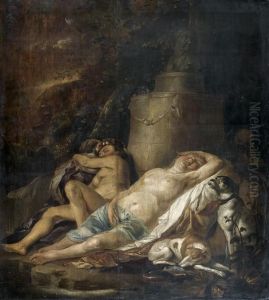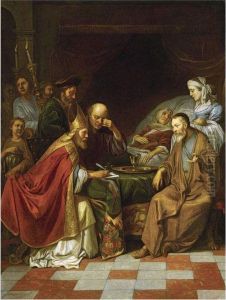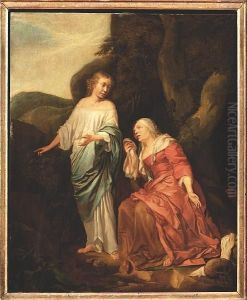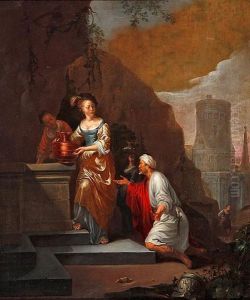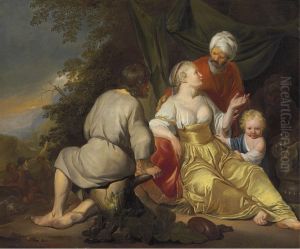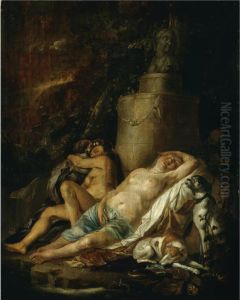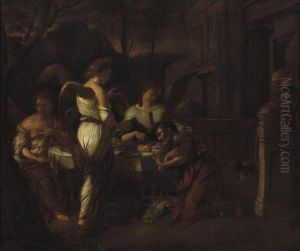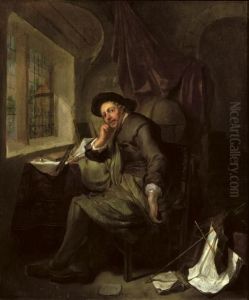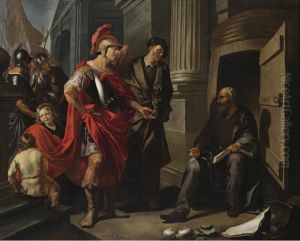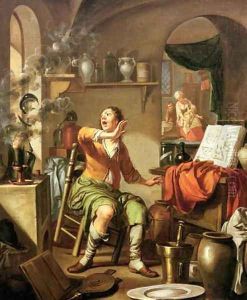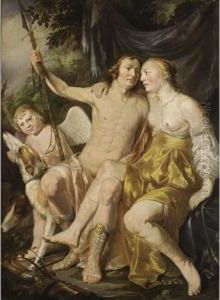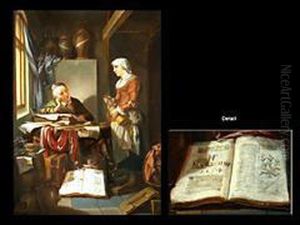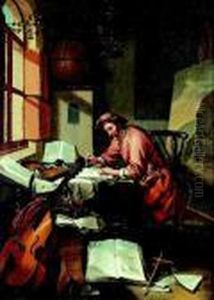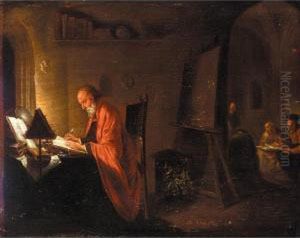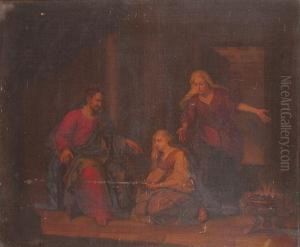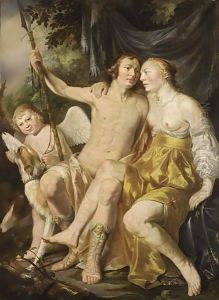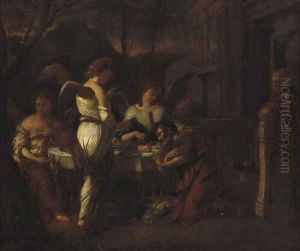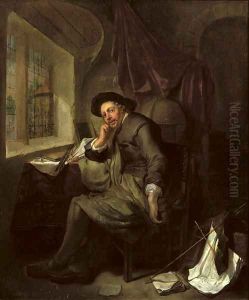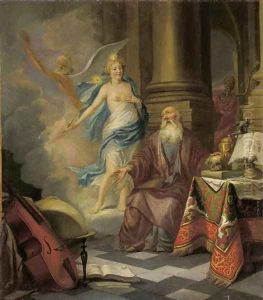Hendrick Heerschop or Herschop Paintings
Hendrick Heerschop, also spelled Hendrik Heerschop or Herschop, was a Dutch Golden Age painter known for his genre scenes and historical paintings. Born in 1626 in Haarlem, Netherlands, Heerschop was a student of Pieter de Grebber, a prominent Haarlem painter of historical and religious works. Under de Grebber's tutelage, Heerschop honed his skills in depicting scenes with a strong narrative element, often imbued with a moral or allegorical message.
Heerschop's early work primarily consisted of genre scenes that depicted everyday life in the 17th century with an emphasis on the human figure and facial expressions. These works demonstrated a keen observation of social interactions and the details of domestic life. His style was influenced by the Haarlem school of painting, which was characterized by a fine attention to detail, a clear and bright palette, and a preference for scenes of daily life.
Throughout his career, Heerschop also painted historical subjects and portraits. His historical paintings often reflected the influence of his master, de Grebber, and other contemporary Dutch painters by incorporating dramatic lighting and a strong sense of storytelling. Heerschop's use of chiaroscuro and his ability to capture the emotional states of his figures added depth to his historical narratives.
Despite his talent, Heerschop did not achieve the same level of fame as some of his contemporaries, such as Frans Hals or Rembrandt. His works, however, were appreciated for their craftsmanship and contribution to the Dutch Golden Age of painting. Heerschop's paintings can be found in various museums and private collections, offering a glimpse into the artistic endeavors of a skilled, though less recognized, artist of his time.
Heerschop continued to work and live in Haarlem throughout his life. He passed away in 1690, leaving behind a body of work that reflects the richness of the Dutch artistic tradition during one of its most celebrated periods.
